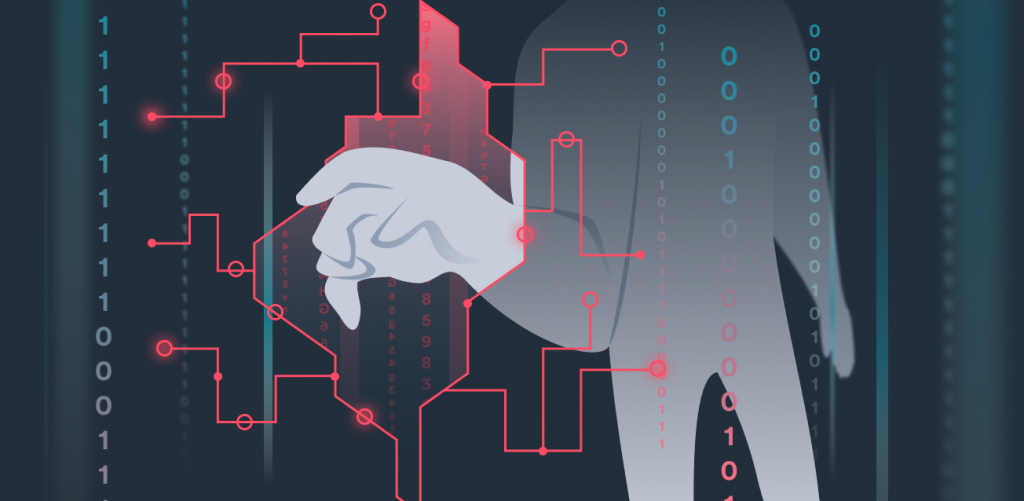
We often find out about data breaches after they’ve already happened. So we’re used to thinking about them in the aftermath of needing to change our credentials and check our credit card history. But how do data breaches happen? And what different types are there? Let’s find out.
What is a data breach?
To dive deep into the types of data breaches, we first need to figure out what a data breach is. On that note, a data breach is any online incident in which the privacy of a data system has been compromised. That, in turn, causes an individual or organization to lose control over their data. In other words, data breaches occur any time unauthorized users gain access to private data.
How do hackers get your information in a data breach? Well, it can involve a calculated, sophisticated attack by a team of hackers or a forgetful employee leaving some files in a coffee shop.

Most dangerous types of data breaches
Not all data breaches threaten your privacy. In the case of a forgetful employee, it’s likely someone at the coffee shop would either find a way to return the file or throw it in the trash. Either way – the damage would be minimal.
However, it’s a bit trickier when talking about malicious data breaches, which can cause real problems for a company or its clients. Let’s take a look at these breaches.
- Ransomware
- Brute force attacks
- Man-in-the-middle
- Insider threat
- Phishing
- Malware or virus
- DDoS (Distributed Denial of Service)
Ransomware
Ransomware breaches often target enterprises that require timely access to sensitive data, such as hospitals. A hacker takes control of the company’s computer system and disables it. Within the virus is a ransom note. The aggrieved party is then ordered to pay money to have their data restored or erased.
Brute force attacks
Brute force attacks, or simply password attacks, are quite simple. Cybercriminals will attempt to guess login credentials and gain access to sensitive data that way. Many passwords are easy to guess using brute force attacks as people tend to use simple passwords to remember them better.
Man-in-the-middle
A man-in-the-middle (MitM) attack is a challenging security breach to spot because it includes a malicious actor infiltrating your system via a trusted “man in the middle.” Typically, the hacker will get access to a customer’s system before launching an assault on your server.
Insider threat
I mentioned that employees can be forgetful, but what about spiteful employees? Imagine how much access to sensitive information employees have. And if they’re angry about something, they could easily be persuaded to steal data and leak it.
Phishing
Hackers may use email or phone calls that seem official to gain access or personal information. They frequently take the guise of known, credible entities—such as a person’s bank. Various levels of misrepresentation to outright lies are employed when cybercriminals steal your information.
Malware
A malware attack refers to many different forms of attack that use viruses, trojans, or worms. Your device’s operating system, software, hardware, or the network and servers to which you’re connected can have security holes. Criminals look for these security flaws because they are ideal places to hide malware. Spyware, in particular, is great for obtaining personal information while remaining unnoticed.
DDoS
A denial-of-service (DoS) attack occurs when hackers attempt to knock a network or service offline by flooding it with traffic to the point the network or service can’t cope. A distributed-denial-of-service attack hijacks devices to send traffic from multiple sources to take down a network. A DDoS attack by itself doesn’t constitute a data breach, and many are often used simply to create havoc on the victim’s end and disrupt business operations. However, DDoS attacks can also act as smokescreens for other attacks occurring behind the scenes.
How do data breaches affect you?
Individuals | Although data breaches seldom target individuals, the consequences of them affect everyone. The data these companies lose isn’t just theirs - it’s yours. Everything from social security numbers to banking information might be exposed as a result of data dumps. Once a criminal acquires your personal information, they can commit all kinds of fraud in your name. Identity theft may wreck your credit and land you in legal trouble, and it's difficult to recover from. |
|---|---|
Businesses | Most data breaches target businesses. They’re often easier to hack than government agencies and have bigger databases that hackers can gain access to. It can be very damaging to their reputation as well as their financial bottom line. Companies like Yahoo, Facebook, and LinkedIn have suffered breaches before. Many people today still remember those organizations for their data breaches rather than their actual company operations. |
Government agencies | They may be harder to hack but often result in much more sensitive information being compromised. Things like military operations, political negotiations, and information about critical national infrastructure can be extremely dangerous to a country and its inhabitants when leaked. |
As a result, it’s critical that you check to see if your information has already been compromised.
How to react accordingly
There’s no easy way to avoid data breaches. Especially when your data has been breached by a third party. However, if you react fast, you can minimize the damage they could do. Let’s say your passwords got leaked. If you discover it in time, you can change your passwords before anyone has had the time to use them to log into your accounts.
That’s where Surfshark Alert comes into play. It will quickly warn you about data breaches that have affected you. Besides warning you, it also details the data that has been found. This allows you to change the affected data or suspend the breached accounts.
FAQ
What is the most common cause of a data breach?
Hacking attempts might be the most common cause of a data breach simply because “hacking” is a very broad term. To put it into perspective, every type of breach I talked about above counts as a hacking attempt.
What are the different types of security breaches?
- Ransomware
- Brute force attacks
- Man-in-the-middle
- Insider threat
- Phishing
- Malware or virus
- DDoS (Distributed Denial of Service)
How do you identify a data breach?
Data breaches are hard to identify until it’s too late as it’s difficult to know when a hacker gains control of your private data. Usually, you’ll notice your data has been breached when you lose user access to your accounts or start seeing unauthorized purchases in your bank account. At that point, the damage has already been done. That’s why the best defense against breaches is monitoring your accounts with tools like Alert that warn you about leaked information before it can be used.
What were the biggest ransomware attacks in history?
The biggest ransomware attacks include WannaCry, NotPetya, Colonial Pipeline, Change Healthcare, and Kaseya. These attacks stood out for their scale, targeting critical infrastructure like hospitals, pipelines, and food supply chains, with ransoms escalating from hundreds of dollars per victim to tens of millions per organization.



